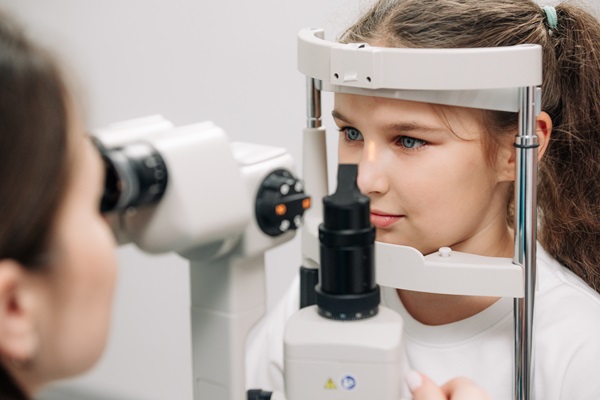The Importance of Regular Vision Care Check-Ups

Proper eye care is essential, as the eyes are windows for the rest of the body. However, people's needs can change as they age or go through different stages of life. Therefore, the value of regular vision care check-ups cannot be overstated. Whether for a child, adult, or senior, these comprehensive check-ups should be part of everyone's preventative care plans.
The role of the eyes
According to the Optometrists Network, the eyes are the second most complex organ in the body, with the brain being the front-runner. The human eye contains over two million working parts that combine to produce images the brain can easily interpret. Image production does not happen by itself. It involves a complex process that passes through each of the eye's layers: the cornea, the sclera, the choroid, and the retina. Therefore, while the eyes do not change size, certain layers can change shape and have varying health levels. In turn, this can create perfect or skewed image production.
Why eye care check-ups are necessary
Regular eye care check-ups can mean annual appointments or one every two years, as it depends on each patient. They are one of the most effective preventative tools optometrists use to determine each eye's health. With that, they can also provide the following:
Early detection of eye diseases or infections
Some eye conditions, such as astigmatism, slowly develop, while others, like pink eye, can happen suddenly. The National Eye Institute has documented dozens of eye conditions, all of which an eye exam can detect early. Early detection is often the best chance of receiving proper eye care to reverse or greatly slow the progression of a disease.
Monitoring of existing eye conditions
For patients with preexisting eye conditions, such as cataracts or glaucoma, regular eye exams are crucial in making sure they do not worsen rapidly. Optometrists can provide appropriate prescriptions (can be limited) or recommend to a specialist with the tools necessary to provide extensive treatment, such as an ophthalmologist.
Prevention of avoidable problems
Some eye conditions, such as straining or some types of blindness, are somewhat or completely avoidable. Regular eye care check-ups allow patients to update the optometrist on their ever-changing lifestyle. Whether it be a new job or hobby, optometrists can provide tips and products to prevent potential issues.
Reveal indicators about the overall health of the body
A lesser-known fact about the eyes is that they can reveal health indicators of other bodily systems or organs. For example, due to the multiple steps the optometrist takes during the appointment, they commonly reveal diabetes, high blood pressure, and even certain neurological conditions like evidence of a seizure or brain tumor.
Updated eye care
According to the Vision Council, roughly 197.6 million Americans wear corrective lenses. 166.5 million wear prescription glasses, while 34.5 million wear over-the-counter readers. Note that the latter should only be worn temporarily until a patient can acquire a true prescription. Regular eye care check-ups allow the optometrist to update the prescription type and strength, as the ultimate goal of lenses is to correct vision issues while helping the patient see clearly.
What to expect during an eye care check-up
Eye care check-ups from an optometrist are painless examinations that primarily focus on how the internal and external health of the eyes affects the patient's vision quality. Therefore, over the approximate span of 45 minutes, the optometrist and their team will perform a series of tests that include, but are not limited to, the following:
Eye health examination
The optometrist dilates the eye using an eye-drop solution to examine each layer. Note that dilation is not always necessary, but if it is, patients should be sure to have sunglasses to wear for the remainder of the day.
Cover test
To determine how the eyes work together, the patient stares at a small target while standing at a distance. The optometrist then covers and uncovers each eye to observe how it moves.
Visual acuity
Patients will identify letters or numbers on a chart that gradually decrease in size. During this test, the optometrist may have the patient cover one eye at a time.
Visual field test
The optometrist will test the patient's peripheral vision, which is how well the patient can see objects at their sides without moving their eyes or turning their heads.
Let a Dallas optometrist examine the health of your eyes
Your vision is an integral part of how you live and how your brain functions. Do not wait until an issue arises to receive a check-up. Texas Optical offers comprehensive evaluations to ensure your eye care is optimizing the internal structures of your eyes to create clear image production.
Request an appointment here: https://www.texasoptical.net or call Texas Optical at (214) 771-7333 for an appointment in our Dallas office.
Check out what others are saying about our services on Yelp: Read our Yelp reviews.
Recent Posts
Prescription contacts provide vision correction, comfort, and convenience for those who do not want to wear glasses. However, caring for and wearing contacts takes some getting used to. Learning to insert, remove, and maintain them will help ensure a comfortable and safe experience.Not all contact lenses are the same, and choosing the right pair is…
If you are thinking about seeing an optometrist, you should first look at your options. When you understand what this doctor does, you can make the right choice for your eye health. Other medical professionals help patients with their eyes too. So, it is important that you get the relief and treatment you need.People depend…
With digital screens occupying the majority of our lives, concerns about eye strain and potential long-term effects have increased the popularity of blue light glasses. Many individuals who spend extended hours in front of screens in their personal and professional lives seek practical solutions to alleviate symptoms associated with prolonged exposure to artificial lighting. Fortunately,…
Visiting an optometrist for a vision test is an important first step in protecting one of your most valuable assets —your eyesight. A professional assessment is key whether you are concerned about changes in your eyesight or addressing potential eye health issues. Discover the many benefits of scheduling a vision test and how it can…


